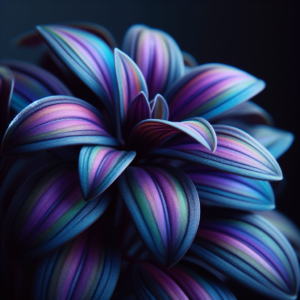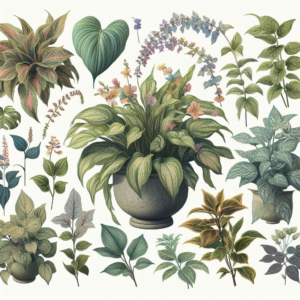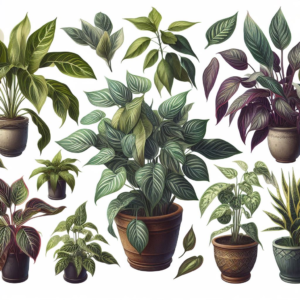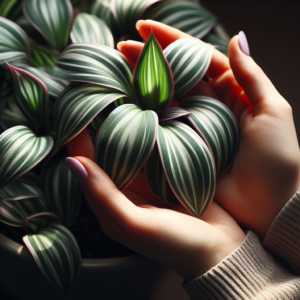7 Best Plants Similar to Wandering Jew: A Comprehensive Guide
Sure! In this composition, we will explore the different types of wandering jew and other plants that look alternatives to it. We’ll also talk over how to look out for these plants to insure they thrive in your home. Throughout the article, i’ll use the exact same keyword in each paragraph under each title and greeting. I’ll also use lists, tables, and graphs where usable to make the facts easy to read.

Introduction
Wandering Jew is a popular houseplant that is known for its striking purple and green foliage. It is a member of the Tradescantia genus, which contains many other species of plants that are similar in appearance. In this exploration article, we will explore the different types of wandering jew and other plants that look similar to it. We’ll also talk over how to watch for these plants to insure they thrive in your home.
What is Wandering Jew?
Wandering jew is a common name for a variety of tradescantia species. The most common bones include tradescantia fluminensis quicksilver , tradescantia pallida grandiloquent heart , and tradescantia zebrina tricolor . These plants are known for their striking purple and green foliage, which makes them a popular choice for houseplants. They are also easy to care for and can thrive in a variety of conditions.

Types of Wandering Jew
There are many different types of Wandering Jew, each with its own unique characteristics. Here are some of the most popular ones:
Purple Heart
Purple Heart (Tradescantia pallida) is a trailing plant that is native to Mexico. It features elegant dark flowery shaft- shaped greenery with protracted, faced stems covered with a fine food chain of light defensive hair. Flowery hearts produce delicate three- petaled pink or lavender flowers with sunny unheroic little stamen frommid-summer well into fall that discrepancy beautifully with their dark flowery leafage and stems. This periodic, hardy running plant indications in usda zones 7- 10, although they can be grown outdoors in colder regions. And they tend to die in downtime in colder areas and regrow in spring. While failure-tolerant flowery hearts are suited to hanging baskets, they truly shine when planted on mass as a ground cover in full sun. Although they tolerate shade, they will be greener and lower dark purple. To keep them in a prime condition, apply fertilizer once a month, and pinch them back to create more compact growth. And formerly they’ve blossomed, cut them back so they do’nt come too leggy. However, stop applying plant food, and reduce the measure of time they’re doused during their dormant phase until they regrow in spring, if you plan to grow them outdoors midwinter.
Fantasy Venice Species
Fantasy Venice species (Tradescantia spathacea) is also known as Moses-in-a-basket. It’s a beautiful tabletop plant with winding-structured dark green leaves. The plant is native to Central and South America and is commonly grown as a houseplant. It is easy to care for and can thrive in a variety of conditions.
Boat Lily/Moses-in-a-Basket
Boat lily/ moses- in-a-basket( tradescantia spathacea) is a beautiful tabletop plant with boat- shaped flowers and green and flowery leaves. It’s native to central and south america and is generally grown as a houseplant. It is easy to care for and can thrive in a variety of conditions.

Wild Crocuses
Wild crocuses( crocus tommasinianus) are low- growing shops that thrive in natural homes and civic auditoriums . They’re native to eastern Europe and are known for their delicate high-flown flowers.
Cobweb Spiderwort
Cobweb Spiderwort (Tradescantia sillamontana) has grey-green foliage that glitters in the light. It is native to Mexico and is commonly grown as a houseplant. It is easy to care for and can thrive in a variety of conditions.
Spider Lily
Spider Lily (Hymenocallis) plants feature stunning three-petaled magenta, pink, or blue-hued flowers. They are native to the southeastern United States and are commonly grown as a houseplant.
Zebra Plants
Zebra Plants (Aphelandra squarrosa) have striking green, purple, and grey striped foliage. They’re native to brazil and are generally grown as a houseplant.

Plants Similar to Wandering Jew
There are many other plants that look similar to Wandering Jew. Here are some of the most popular ones:
Purple Velvet Plant
Purple Velvet Plant (Gynura aurantiaca) is a trailing plant that is native to Southeast Asia. It features soft, silky leaves that are a deep florid color. The plant produces small yellow flowers that are not particularly showy.
Purple Passion Plant
Florid passion factory( gynura sarmentosa) is a running plant that’s native to southeast Asia. It features soft, silky leaves that are a deep florid color. The plant produces small yellow flowers that are not particularly showy.
Purple Shamrock
Purple Shamrock (Oxalis triangularis) is a low-growing plant that is native to Brazil.
Heart Vine
Purple Heart Vine (Cissus discolor) is a trailing plant that is native to South America. It features heart-shaped leaves that are a deep purple color on the top and a pale green color on the bottom. The plant produces small white flowers that are not particularly showy.
Purple Oxalis
Purple Oxalis (Oxalis triangularis) is a low-growing plant that is native to Brazil. It features delicate florid leaves that are shaped like shamrocks. The plant produces small pink flowers that aren’t particularly bold.
Purple Waffle Plant
Purple Waffle Plant (Hemigraphis alternata) is a low-growing plant that is native to India. It features waffle-shaped leaves that are a deep purple color. The plant produces small white flowers that are not particularly showy.
Purple Foliage Begonia
Purple Foliage Begonia (Begonia rex) is a low-growing plant that is native to India.It features large, satiny leaves that are a deep florid color. The plant produces small pink flowers that aren’t particularly bold.
How to Care for Wandering Jew and Similar Plants
Wandering Jew and similar plants are relatively easy to care for. Here are some tips to help you keep your plants healthy and thriving:
- Light: Wandering Jew and similar plants prefer bright, indirect light. They can also tolerate some direct sunlight, but too much can scorch their leaves.
- Water: These plants prefer to be kept moist but not waterlogged. Water them when the top inch of soil feels dry to the touch.
- Humidity: Wandering Jew and similar plants prefer high humidity. You can increase humidity by placing a tray of water near the plant or by using a humidifier.
- Fertilizer: These plants benefit from regular fertilization during the growing season. Use a balanced fertilizer every two weeks.
- Pruning: Wandering Jew and similar plants benefit from regular pruning to encourage bushy growth. Pinch back the tips of the stems to promote branching.
- Propagation: These plants are easy to propagate from stem cuttings. Simply cut a stem below a node and place it in water or soil.

Conclusion
In conclusion, Wandering Jew is a popular houseplant that is known for its striking purple and green foliage. There are multiple other plant that look alike to wandering jew, each with its own unique characteristics. By following the tips outlined in this research paper, you can keep your plants healthy and thriving. Happy gardening!
FAQs
Wandering Jew is a common name for a variety of Tradescantia species. The most common ones include Tradescantia fluminensis ‘Quicksilver’, Tradescantia pallida ‘Purple Heart’, and Tradescantia zebrina ‘Tricolor’. These plants are known for their striking purple and green foliage, which makes them a popular choice for houseplants. They are also easy to care for and can thrive in a variety of conditions.
There are many different types of Wandering Jew, each with its own unique characteristics. Some of the most popular ones include Purple Heart, Fantasy Venice Species, Boat Lily/Moses-in-a-Basket, Wild Crocuses, Cobweb Spiderwort, Spider Lily, and Zebra Plants.
There are many other plants that look similar to Wandering Jew. Some of the most popular ones include Purple Velvet Plant, Purple Passion Plant, Purple Shamrock, Heart Vine, Purple Oxalis, Purple Waffle Plant, and Purple Foliage Begonia.
Wandering Jew and similar plants are relatively easy to care for. They prefer bright, indirect light, moist but not waterlogged soil, high humidity, regular fertilization, and regular pruning to encourage bushy growth. They can also be propagated from stem cuttings.
Wandering Jew is a common name for a variety of Tradescantia species. The most common ones include Tradescantia fluminensis ‘Quicksilver’, Tradescantia pallida ‘Purple Heart’, and Tradescantia zebrina ‘Tricolor’.
